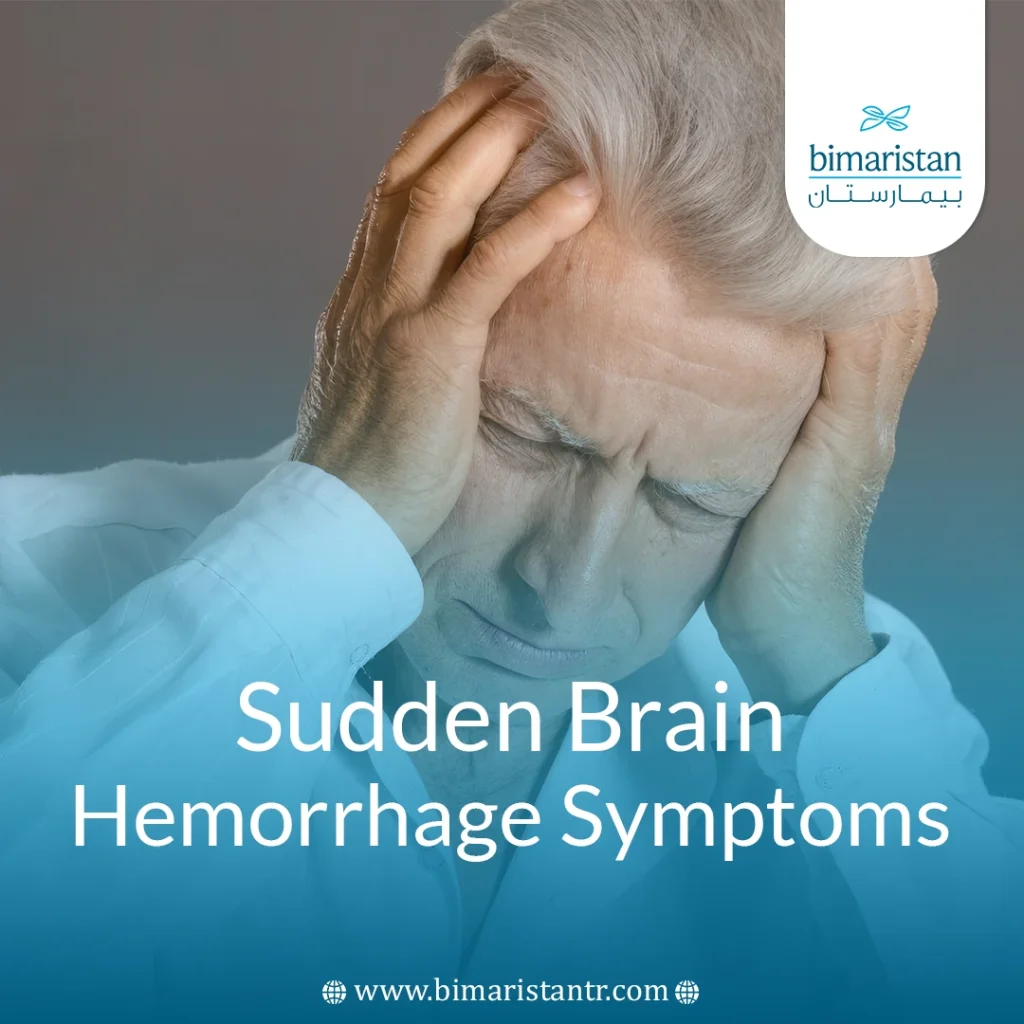Knowing the symptoms of sudden cerebral hemorrhage (SCH) is crucial for early management of this serious and potentially life-threatening neurological condition. Statistics show that a quick response based on early indicators reduces mortality rates and improves the quality of life after recovery.
What is a cerebral hemorrhage?
It is bleeding that occurs in or around the brain tissue due to the rupture of one or more blood vessels, which leads to the leakage of blood inside these tissues and the formation of a mass that presses on the brain tissue, and this obstructs the flow of blood carrying oxygen and nutrients and causes damage to nerve cells, and is considered a very serious and life-threatening emergency if not treated urgently.
Brain hemorrhage is categorized into four main types, the first is intracerebral hemorrhage, the second is subarachnoid hemorrhage, which occurs in the space between the brain and the thin membrane surrounding it, the third is subdural hemorrhage, which occurs between the dura mater (the outer membrane of the brain) and the brain tissue, and finally the fourth is epidural hemorrhage, which occurs between the dura mater and the skull.

Symptoms of sudden cerebral hemorrhage
The symptoms of sudden cerebral hemorrhage appear quickly and are obvious to the patient and those around him, as they are characterized by a sudden deterioration of the entire body:
- Sudden and severe headaches: A person describes this headache as the worst headache they have ever experienced, as it starts suddenly and peaks after a few seconds.
- Sudden weakness in the face or a limb: Usually on one side of the body, opposite the location of the intracerebral hemorrhage.
- Disturbances in vision: Blurred vision, double vision, temporary vision loss, and, in some very rare cases, brain hemorrhage may cause visual hallucinations, where the patient sees faces or animals that are not there.
- Difficulty speaking and understanding: Stuttering, heavy tongue, slurred speech, and the inability to form correct sentences.
- Loss of balance or motor coordination: Difficulty walking, staggering, and feeling very dizzy.
- Nausea or vomiting: Often caused by a severe headache.
- Sudden seizures: Occurs in some patients with no history of seizures.
- Loss of consciousness or fainting: Occurs suddenly or after the development of previous symptoms.
These symptoms appear gradually and are very fast, as the person progresses from the first symptom to death within several minutes, so when one of these symptoms suddenly appears, you should go to the hospital as an emergency.
When is a cerebral hemorrhage fatal?
Brain hemorrhage can be fatal in many cases, depending on the size and location of the hemorrhage, the speed of symptom development, and the complications that may occur after the hemorrhage. In addition to the above, the elderly, uncontrolled hypertensive patients, or heart patients are more likely to die from brain hemorrhage than the rest of the population.
The role of the size and location of the bleeding
The greater the volume of blood collected, the greater the pressure on the brain tissue, which leads to loss of vital functions, and the location of the bleeding plays a big role, as brain stem hemorrhages are more dangerous than others and are often fatal.
The role of speed of symptom development
If there are sudden, severe, acute symptoms such as rapid loss of consciousness, respiratory arrest, or dilated pupils, this indicates an increased risk of death from cerebral hemorrhage.
The role of complications after bleeding
Bleeding can lead to cerebral edema, which increases intracranial pressure, which can lead to brain stem herniation, a fatal condition.
Top causes of cerebral hemorrhage
The causes of brain hemorrhage are varied, as it may be due to a systemic disease such as chronic hypertension, or it may be due to head injuries as a result of some accidents, or due to cerebrovascular diseases:
- Chronic high blood pressure: Chronic high blood pressure weakens the walls of cerebral vessels over time, causing them to become brittle, which is the most common cause of cerebral hemorrhage.
- Head injuries, Such as traffic accidents, sports injuries, or hard falls, the bleeding in this case is often either epidural or subdural.
- Brain vascular diseases: Such as aneurysms and arteriovenous malformations of brain vessels.
- Brain tumors: Some brain tumors, especially cancers, create new vessels that are fragile and easy to break.
- Other causes: Alcohol and drug abuse, chronic liver disease as it reduces clotting factors and thus increases the risk of bleeding, and finally cerebral vasculitis.
There are some other rare and strange but scientifically proven causes, such as the occurrence of a brain hemorrhage after severe sneezing, as severe sneezing increases the pressure and thus may lead to the rupture of the vessels, and another strange cause is the sudden change in atmospheric pressure, as deep diving may cause a brain hemorrhage in some rare cases.
How is cerebral hemorrhage diagnosed?
Cerebral hemorrhage is diagnosed through a series of urgent and rapid tests due to the seriousness of the condition, and it begins with the initial clinical assessment, where the doctor asks if the patient has felt a sudden and severe headache, observes if there is paralysis in one half of the body and pays attention to the patient’s stuttering, so the initial clinical assessment ends, and the patient is initially diagnosed with cerebral hemorrhage.
Then the CT scan phase begins, because this type of imaging is characterized by its high speed and excellent accuracy in detecting acute hemorrhage, and lumbar puncture may be requested when the CT scan is negative and the doctor suspects subarachnoid hemorrhage, and MRI may be used to assess long-term damage to the brain tissue.
First steps when a cerebral hemorrhage is suspected
When some symptoms of sudden cerebral hemorrhage appear, and a brain hemorrhage is suspected, call an ambulance immediately via the local emergency number (911 or 112), and do not try to transport the patient in your car unless an ambulance is not available. Try to keep the patient calm and monitor their vital signs until the ambulance arrives, and avoid giving them anything by mouth as this puts them at risk of suffocation. Try to record the onset of symptoms if possible, avoid giving them painkillers, and do not lower their head below the level of their body. With these tips, the patient can survive the brain hemorrhage phase after timely treatment and avoid the risk of permanent disabilities.
At the end of the day, dealing with a brain hemorrhage is a critical medical condition that requires careful and immediate care. Bimarestan Medical Center offers comprehensive patient support, combining state-of-the-art technology with specialized medical teams that put your health first. Whether you are at the beginning of your treatment or recovery journey, Bimarestan offers care that you can trust.
Sources:
- National Institute of Neurological Disorders and Stroke. (2023). Cerebral hemorrhage fact sheet.
- Centers for Disease Control and Prevention. (2023). Stroke signs and symptoms.

